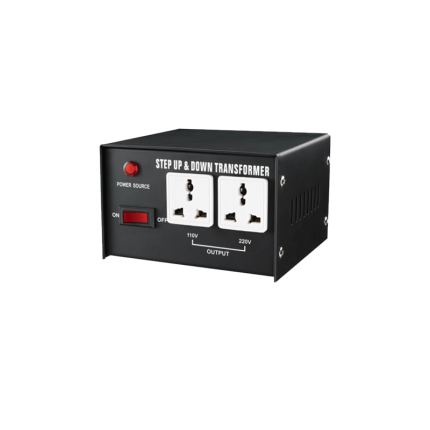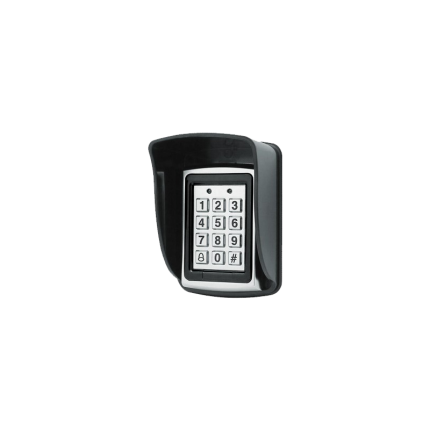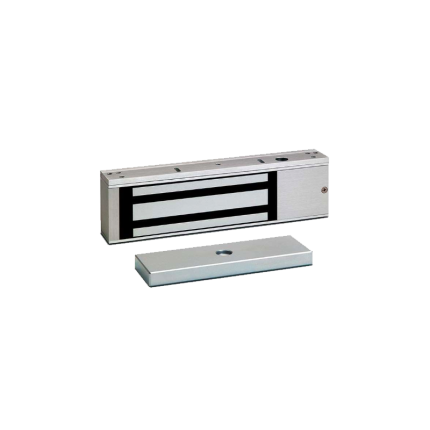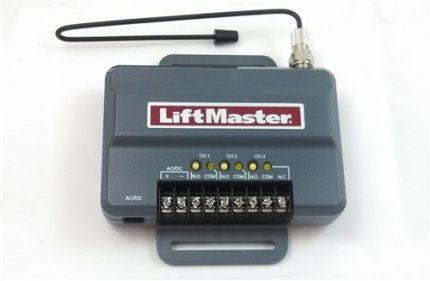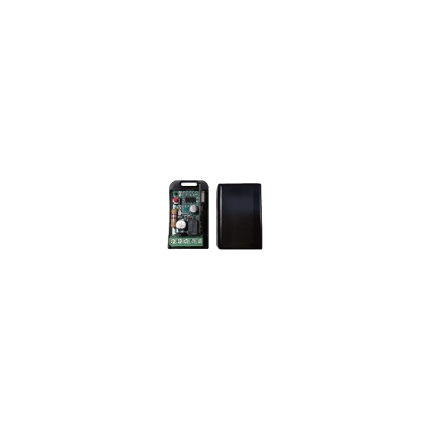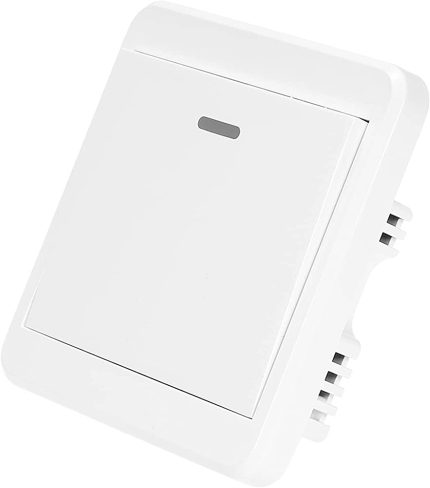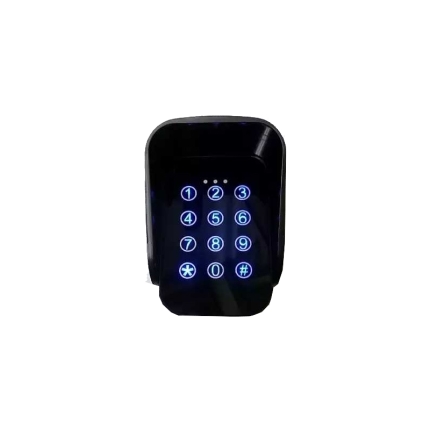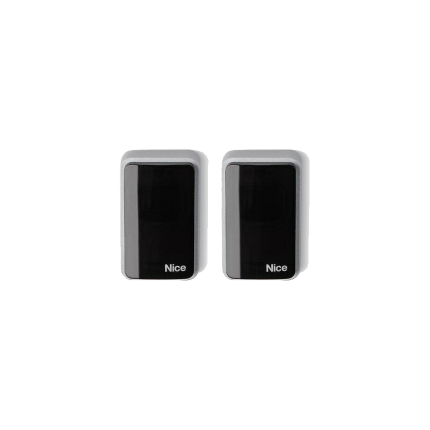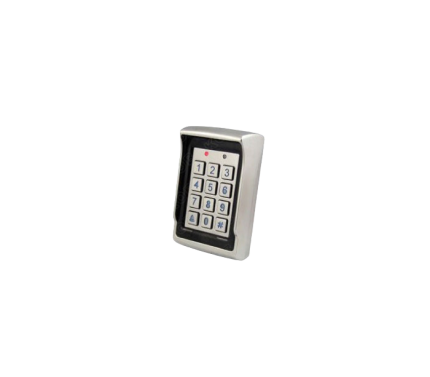Shop
Power inverter 110 V to 220 V
Ship or pick up from our office.
Power inverter 110 V to 220 V
A power inverter 110V to 220V (also known as a step-up voltage converter) is an electronic device that transforms an input voltage of 110 volts (V) into an output voltage of 220V. This type of inverter is crucial for bridging the gap between different regional electrical standards. How It Works At its core, a 110V to 220V power inverter utilizes a transformer to achieve the voltage conversion. Here's a simplified explanation:- Input (DC to AC Conversion for Inverters): While the prompt asks about a "power inverter 110V to 220V," it's important to clarify that traditional inverters convert DC (Direct Current) from a battery (e.g., 12V, 24V, 48V) into AC (Alternating Current). If the input is already 110V AC, then the device is more accurately called a voltage converter or transformer, as it's stepping up AC to AC. However, some inverters are designed to take a DC input and produce 110V AC or 220V AC, or even both.
- Step-Up Transformation: For a 110V AC to 220V AC conversion, the device contains a transformer with primary and secondary coils. The 110V AC from the power source is fed into the primary coil. Through electromagnetic induction, this voltage is "stepped up" to 220V in the secondary coil, which then becomes the output.
- Waveform: Inverters and converters can produce different types of AC waveforms:
- Pure Sine Wave: This is the most desirable waveform, replicating the smooth, consistent power from a utility grid. It's ideal for sensitive electronics.
- Modified Sine Wave: This is a cruder approximation of a sine wave and is generally suitable for less sensitive appliances, but can cause issues or damage with certain delicate electronics.
- Power Capacity (Wattage): This indicates how much power the device can supply. Ensure it's sufficient to handle the total wattage of the appliances you intend to connect. Exceeding the inverter's capacity can lead to damage.
- Efficiency: A higher efficiency rating means less energy is wasted as heat during the conversion process, which is important for battery-powered setups.
- Safety Features: Look for features like overload protection, short-circuit protection, and surge protection to safeguard your appliances and the inverter itself.
- Frequency: Electrical grids operate at either 50 Hz or 60 Hz. Ensure the inverter's output frequency matches the requirements of your appliances. Some inverters can switch between frequencies.
- Portability: Some are designed for travel, while others are larger for industrial or home use.
- International Travel: They allow travelers from countries with 110V systems (like North America) to use their 220V appliances (like hair dryers, chargers) in countries with 220V outlets (common in Europe, Asia, and other regions).
- Using Imported Appliances: If you have an appliance designed for 220V (e.g., a European kitchen appliance) but your home has 110V outlets, a step-up converter enables you to use it.
- Industrial and Specialized Applications: In industries, they can be used for automation and control systems, telecommunications, and emergency power systems to ensure compatible power supply for various equipment.
- Renewable Energy Systems: In off-grid solar or wind power setups, inverters convert DC power from batteries into the required AC voltage (which could be 110V or 220V depending on the load).
- High-Power Appliances: Some larger appliances or specialized tools might require 220V power, even in regions where 110V is standard for most household items. A converter can provide the necessary voltage without extensive electrical rewiring.
Magnetic lock
Ship or pick up from our office.
Magnetic lock
*Capacity: 180 Kg *DC 12 VRadio receiver – LiftMaster 850LM – 3 Channels
Ship or pick up from our office.
Radio receiver – LiftMaster 850LM – 3 Channels
Universal Radio Receiver LiftMaster 850LM is used for garage doors and driveway gate operators.
- Universal Radio Receiver Liftmaster 850LM is suitable for residential and commercial sliding gates and swing driveway gates.
- Security Encrypted Code For Extra Dependability.
- Manage Multiple Access Points With A Single LiftMaster Radio Receiver.
- 3 channels for control of 3 driveway gate openers.
Radio receiver RQ1M433 – IT1
Ship or pick up from our office.
Radio receiver RQ1M433 – IT1
(Compatible with the wireless keypad control KW402 & KW125) *Made in Italy *AC/DC 12-24 V *1-CH *433.92 MHz *Capacity: 30 remotesWireless Keypad Access Control KW200
Wireless Keypad Access Control KW200
*Backlight *433 MHz *Finger Touch *Rain coverWireless keypad access control systems replace traditional keys with a digital PIN code entry for building access, eliminating the need for physical keys and enhancing security.
These systems often include features like remote management via smart devices, audit trails of access events, and integration with other security systems like intercoms.
Here's a more detailed breakdown:
Core Functionality:
-
Keyless Entry:Users enter a unique PIN code into a keypad to unlock a door or gate.
-
Wireless Communication:The keypad communicates wirelessly with a receiver or controller, eliminating the need for extensive wiring.
-
Remote Management:Many systems allow administrators to manage access permissions, view audit trails, and adjust settings remotely via a smartphone app or computer.
-
Integration:Some systems can integrate with intercoms, surveillance cameras, and other security components for a more comprehensive solution.
Key Features:
- PIN Codes: Users are assigned unique PIN codes for entry.
- Proximity Cards/Fobs: Some systems also support access via proximity cards or fobs for users who prefer that method.
- Audit Trails: The system can record and store data about who accessed the door, when, and how, providing a valuable security record.
- Weatherproof and Durable: Many outdoor keypads are designed to withstand harsh weather conditions and vandalism.
- Backlit Keypads: Backlit keypads make it easier to use the system in low-light conditions.
Types of Wireless Keypad Access Control:
- Stand-Alone Systems: These systems are self-contained and don't require connection to a central system.
- Integrated Systems: These systems are part of a larger access control or building management system.
- Wired and Wireless Hybrid: Some systems combine wired and wireless components for added flexibility.
Benefits:
- Enhanced Security: Eliminates the risk of lost or stolen keys.
- Increased Convenience: Users don't need to carry keys.
- Improved Auditability: Tracks access events for security monitoring.
- Remote Management: Allows for easy administration and control.
PIR Infrared Sensor – wireless
Ship or pick up from our office.
PIR Infrared Sensor – wireless
A wireless PIR (Passive Infrared) sensor is a type of motion detector that uses infrared technology to detect the presence and movement of people, animals, or other warm objects within its field of view, and then transmits this information wirelessly to a central control unit. Here's a breakdown of its key aspects: PIR (Passive Infrared) Technology:- Passive: The "passive" in PIR means the sensor does not emit any energy (like radar or ultrasonic sensors do). Instead, it "passively" detects the infrared radiation (heat energy) naturally emitted by all objects with a temperature above absolute zero.
- Infrared Detection: All living beings (humans, pets) and warm objects emit infrared radiation.
- How it works: A PIR sensor typically has two sensing elements within its housing. When no motion is present, both elements detect the same amount of infrared radiation from the ambient environment. When a warm body moves across the sensor's field of view, it first enters one sensing element's range, causing a rapid change in the infrared energy detected by that element. As the body moves further, it then affects the second element. This differential change in infrared energy between the two elements is what the sensor interprets as motion.
- Fresnel Lens: PIR sensors often have a specialized faceted lens (a Fresnel lens) on their front. This lens helps to focus the infrared radiation onto the sensing elements and creates multiple "detection zones" or "fingers" within the sensor's field of view, which increases its coverage and sensitivity.
- No Wires for Communication: The "wireless" aspect means the sensor communicates with the alarm system's control panel (or receiver) using radio frequencies (RF) rather than physical wires.
- Battery Powered: Wireless PIR sensors are usually battery-powered, making them easy to install anywhere without needing to run electrical wiring. The batteries typically last for a significant period (months to years) before needing replacement.
- Transmitter: Each sensor has a small radio transmitter that sends a signal to the central alarm panel when motion is detected.
- Receiver: The alarm control panel has a built-in or external wireless receiver that listens for signals from the PIR sensors (and other wireless sensors like door/window contacts).
- Easy Installation: No need for complex wiring, making DIY installation simpler and reducing labor costs for professional installers. This is a significant advantage in existing structures where running wires might be difficult or aesthetically unappealing.
- Flexible Placement: Can be mounted virtually anywhere within their effective range of the control panel, providing versatile coverage.
- Reduced False Alarms (Compared to Simple Motion Detectors): Because PIR sensors detect heat signatures, they are less likely to be triggered by non-living things like swaying curtains, blowing leaves, or shadows (though extreme drafts or sudden temperature changes can still be an issue if not properly installed).
- Pet Immunity: Many wireless PIR sensors offer "pet immunity" features. These sensors are designed to ignore the infrared signatures of smaller animals (below a certain weight, e.g., 40 lbs or 80 lbs), helping to prevent false alarms in homes with pets. This is achieved by adjusting the sensor's lens and internal logic to focus on specific infrared patterns that are indicative of human-sized targets.
- Energy Efficiency: As passive devices, they consume very little power, contributing to long battery life.
- Comprehensive Coverage: Ideal for protecting large areas or rooms, as a single sensor can cover a significant space.
- Integration: Seamlessly integrate with smart home security systems, allowing for remote monitoring, alerts via smartphone apps, and sometimes even integration with other smart devices (e.g., turning on lights when motion is detected).
- Home Security Systems: Widely used indoors to detect intruders in living rooms, hallways, bedrooms, and basements. Outdoor-rated versions are also available for perimeter protection.
- Commercial Security Systems: Protecting offices, warehouses, retail spaces, and other commercial properties.
- Automated Lighting: Activating lights in rooms, hallways, or outdoor areas when someone enters.
- Smart Home Automation: Triggering various smart home routines based on occupancy (e.g., adjusting thermostat, playing music).
- Access Control: Monitoring movement in restricted areas.
- Placement: Proper placement is crucial to avoid false alarms. Avoid aiming them directly at heat sources (vents, radiators, direct sunlight, fireplaces), areas with strong drafts, or windows (especially those exposed to direct sun or busy outdoor activity).
- Pet Immunity Settings: If you have pets, ensure the sensor has pet immunity and that it's set correctly for your pet's size and the sensor's mounting height.
- Signal Range: Ensure the sensor is within the wireless range of your alarm panel, considering walls and other obstructions that might weaken the signal.
- Battery Life: Be mindful of battery replacement schedules to ensure continuous operation.
Garden LED Light -Key Automation STIKVC
Ship or pick up from our office.
PRODUCT SHEET PDFGarden LED Light -Key Automation STIKVC
*Lights for pedestrian or vehicular premises are to be installed on top of the fence *Completely made of aluminum *Replaceable LED *Power: 24-35 V/DC - 2W *Body color: Corten *LED color: 4400K/132lm *Height: 246 mm *Version: Vertical face *International Protection Rating: IP 54Safety sensor – Nice Era-EPM
Ship or pick up from our office.
Safety sensor - Nice Era-EPM
The Nice Era-EPM is a photoelectric safety sensor commonly used in automation systems for gates, garage doors, barriers, and similar installations. It's also often referred to as a photocell or beam sensor. Here's a breakdown of what it is and its key features: Purpose: Its primary function is to enhance safety by detecting obstacles in the path of a moving gate or door. It consists of a transmitter (TX) and a receiver (RX) that are installed facing each other. The transmitter emits an infrared beam, and if this beam is interrupted by an object, the receiver signals the control unit to stop or reverse the automation system, preventing accidents, injuries, or damage to vehicles. Key Features and Specifications:- Photoelectric Technology: It uses an infrared beam to detect obstructions.
- Transmitter (TX) and Receiver (RX): Comes as a pair, with one unit transmitting the beam and the other receiving it.
- Relay Output: It's a relay photocell, meaning it sends a signal to the control unit via a relay output.
- Range: Typically has a useful range of 15 meters, which can be extended up to 30 meters in some configurations (e.g., by cutting a "+10m" electrical bridge). However, range can be reduced in adverse weather conditions like fog, rain, or dust.
- Anti-Glare Circuitry: Designed with an anti-glare circuit to minimize interference from sunlight, ensuring reliable performance in various lighting conditions.
- Durable Construction: Features an ABS body that is resistant to weather conditions, making it suitable for outdoor use (IP44 protection rating).
- Easy Installation: Known for its simplified assembly and installation procedure. Some versions (like those with Nice BlueBUS technology) require only two wires for connection to compatible control units, simplifying wiring.
- Wide Angle of Reception: Generally has a 10° (or 8° with a reduction cone) angle of reception, which helps in compensating for minor alignment issues.
- Compatibility: While it's a Nice-branded product, it's often described as a "universal photocell" compatible with most gate and garage door automation systems, especially those that accept standard relay inputs. Some models also feature Nice BlueBUS technology for seamless integration with Nice control units that support it.
- Safety Compliance: It is a Type D presence detector according to EN 12453 standard, which means it detects obstacles on the optical axis. When connected to a control unit with a "phototest" function, it can achieve Category 2 safety against malfunctions according to EN 954-1.
Keypad Access Control K170S300A
Keypad Access Control K170S300A
*Rain Shield Cover Included *Waterproof Version *EM/ID card/tag reader *Backlight *DC 12 V *Shock resistance *Anti-vandal Metal shell *Doorbell Button Wiegand Output: Equipped with a Wiegand output for seamless integration with a controller. Multiple Access Modes: Offers Card, PIN, or Card + PIN options, providing versatile access control methods. Durable Metal Case: Housed in a robust Zinc Alloy electroplated case, ensuring durability and vandal resistance. RFID Key Fob Duplicator Attribute-Based Access Control Vs Role-Based Access Control 1,000 User Capacity: Supports up to 1,000 users, ideal for large-scale access control in commercial and industrial settings. Backlight Keypad: Features a backlight keypad for easy operation in low-light conditions.Description
1000 Users Metal Case 125KHZ RFID Card Keypad Access Controller with Backlight Door Control Independent Code Access Device
Description
Single door multifunction standalone access controller or a Wiegand output keypad or card reader.
It is suitable for mounting either indoor or outdoor in harsh environments.
It is housed in a strong, sturdy and vandal proof Zinc Alloy electroplated case which is availabl in either a bright silver or matt silver finish.
Metal Case&Waterproof .Supports up to 1000 users in either a Card, 4 digit PIN, or a Card + PIN option.
The inbuilt card reader supports125KHZ EM cardsLock output current short circuit protection, Wiegand output , and a backlight keypad.
Ideal choice for door access not only for small shops and domestic households but als for commercial and industrial applications such as factories, warehouses, laboratories, banks and prisons.
Features
Simple Programming, Easy Operatio
Adopt function steady card reader of block
Keypad Locks for 30 Seconds After 10 False Entrie
Can be Connected with Door-open Button and Doorbel
Non-volatile Memory in Power Failure
Tamper Switch can be Connected to Security Alarm System
Backlight key
Wiegand 26 output for connection to a controller
Support 1000Users

